Traditional Romanian food is hearty, delicious and a blend of wonderful ingredients heavily influenced by neighbouring countries. Each region in Romania has its own culinary tradition and every Romanian celebrates traditional dishes that have a deep cultural significance. When I think of Romanian food, a myriad of childhood memories come to life: rich dishes like sarmale, with polenta, served with tasty tripe or vegetable soups and roasted eggplant salads.
Romania is a perfect destination for food lovers and you’ll find such an array of dishes and foods to satisfy your taste. Romanian food is very tasty, usually made with whole food ingredients. Romanian food is varied, filling and so delicious.
Want to learn from locals? Book your food walking tour in Bucharest!
Traditionally, Romanian cuisine includes meat, lots of vegetables, and fruits. With intense and rich flavours, and yet with a familiar taste, we can only describe Romanian dishes as the ultimate comfort food. Food lovers will be amazed by the richness and diversity of traditional local cuisine. Whether it’s appetizers, main dishes or desserts, food from Romania is a heady blend of self-indulgence and exotic flavours.
As you plan to visit Romania, get your taste buds ready for a journey of invigoration, to be satiated to levels not experienced elsewhere in Europe. What foods are we talking about? Here are the best mouth-watering Romanian foods you need to try when you visit the country.
Table of Contents
1. Sarmale (Cabbage Rolls)
Sarmale is considered the Romanian national dish and you will find them on every traditional Romanian restaurant menu. In some regions, you will see them on the menu as Sărmăluțe. Don’t even think twice, order this dish as it’s tasty, rich and so delicious!
This lip-smacking and finger-licking “national” dish is made up of minced meat (pork, beef or chicken) and a mixture of rice, veggies, and local herbs. Before a main holiday, Romanians fast, which means you will find sarmale on the menus but made vegan, with rice and vegetables only. These are rolled in young leaves of grape/pickled cabbage to create a uniquely delicate flavour.
The tastiest cabbage rolls are simmered for hours in a clay pot to really develop a wonderful and rich flavour. Every family in Romania has its own version of sarmale and all of them taste incredible. This dish is a must during holidays and celebrations including Christmas, New Year and weddings. No Romanian feast is complete without sarmale.
Traditionally sarmale is served with a side of polenta and a little sour cream. One of the best Romanian dishes and a must-try on your next visit.
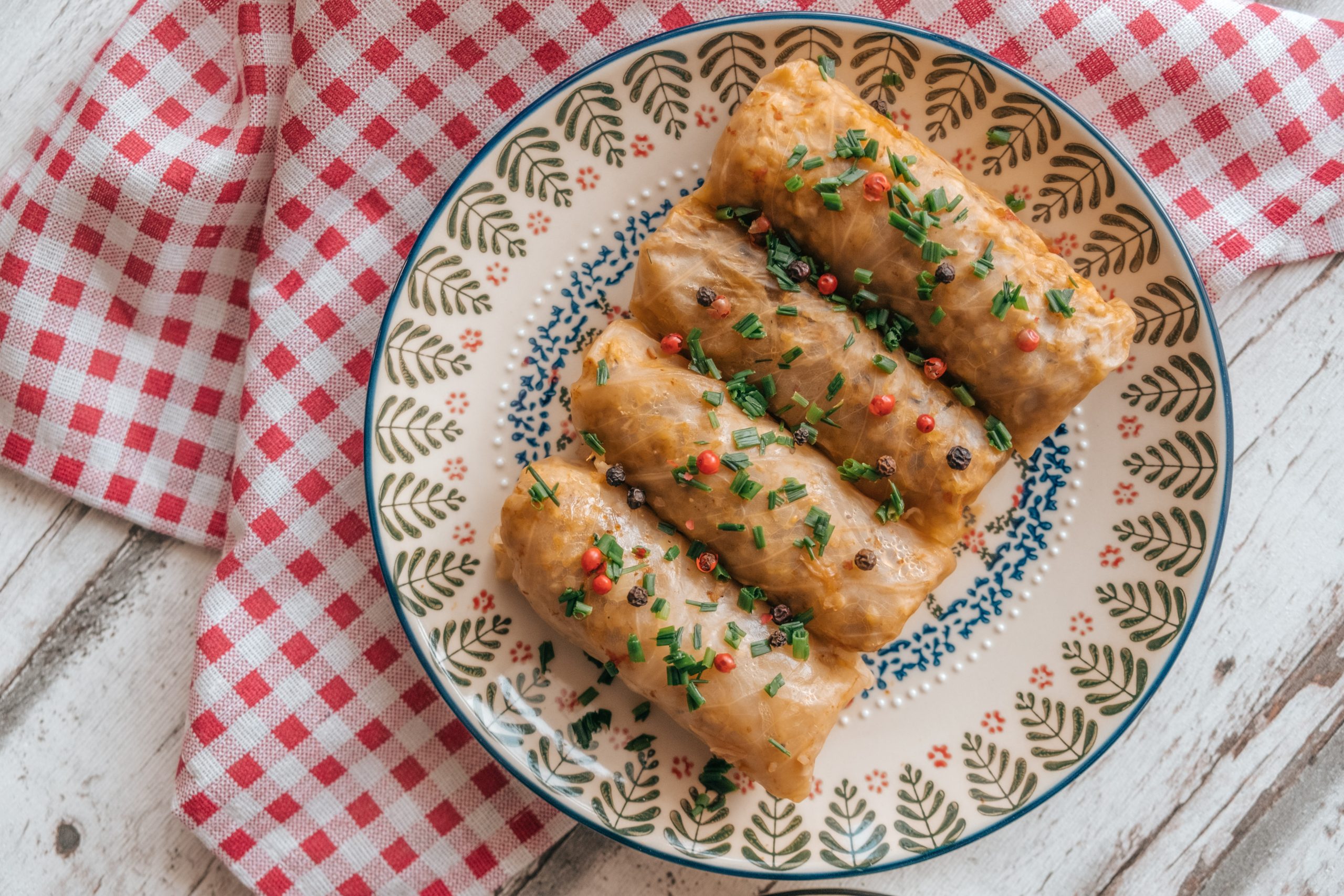
2. Polenta (mămăligă)
Polenta or mămăligă is the second most popular traditional Romanian food. It’s usually served together with sarmale but there are ways to serve polenta on its own as well.
For centuries, this pudding that’s made of cornmeal has remained an essential component of Romanian cuisine. It can be traced back to Roman times when soldiers in the field prepared this grain-based porridge as a convenient and easy way of sustaining themselves.
With sarmale, polenta is served plain or with a little sour cream and Romanian cheese. However, in the mountains in places like Brasov or Poiana Brasov, you will find a version of this dish called “Bulz”. Bulz is a ball made from polenta and filled with meat, sour cream and Romanian cheese. It’s usually served alongside sausages and with an egg and more cream on top.
Mămăligă is a traditional Romanian food you will find on every restaurant menu.
Here is a recipe for traditional Romanian polenta.

3. Tripe Soup (Ciorbă de Burtă)
Ciorbă de burtă is a yellow-coloured, sour, creamy, and garlicky Romanian soup that contains beef tripe strips and red pepper slices. This soup is considered a delicacy by many because of the main ingredient: tripe. Similar to many other Romanian foods, the origins of Ciorbă de burtă go back to the Ottoman Empire.
The tripe soup is traditionally seasoned with vinegar and mujdei – a rather spicy garlic sauce made from a mix of oil, salt, and crushed garlic cloves. For the broth, various ingredients are used including carrots, onions, lovage, peppercorns, parsley, celery, bay leaves, and parsnip roots.
Traditionally, Ciorbă de burtă is served piping hot accompanied by spicy green peppers and some sour cream. You will always be given some vinegar so you can make the soup as sour as you like.
It is one of the most popular soups in Romania and one we recommend that you try. It really is special and delicious.

4. Zacuscă (Roasted vegetable spread)
Zacusca has to be one of the best ever Romanian foods. I love it so much, I continue to make this 100+ year-old recipe every single month.
In Romania, authentic zacusca is made with roasted aubergine and bell peppers simmers with oil and fresh tomato sauce. You can still find old grannies in the mountains making zacusca the traditional way with wooden tools and large cauldrons on an open fire.
Zacusca is served with fresh bread as a spread. It’s so rich in flavour and good for you thanks to the high veggie content. Zacusca is a very popular Romanian food and your trip here cannot be deemed complete before you try it. It’s found nearly everywhere, from corner stores to supermarkets and even 5-star restaurants and it’s also a wonderful souvenir from Romania for foodies out there.
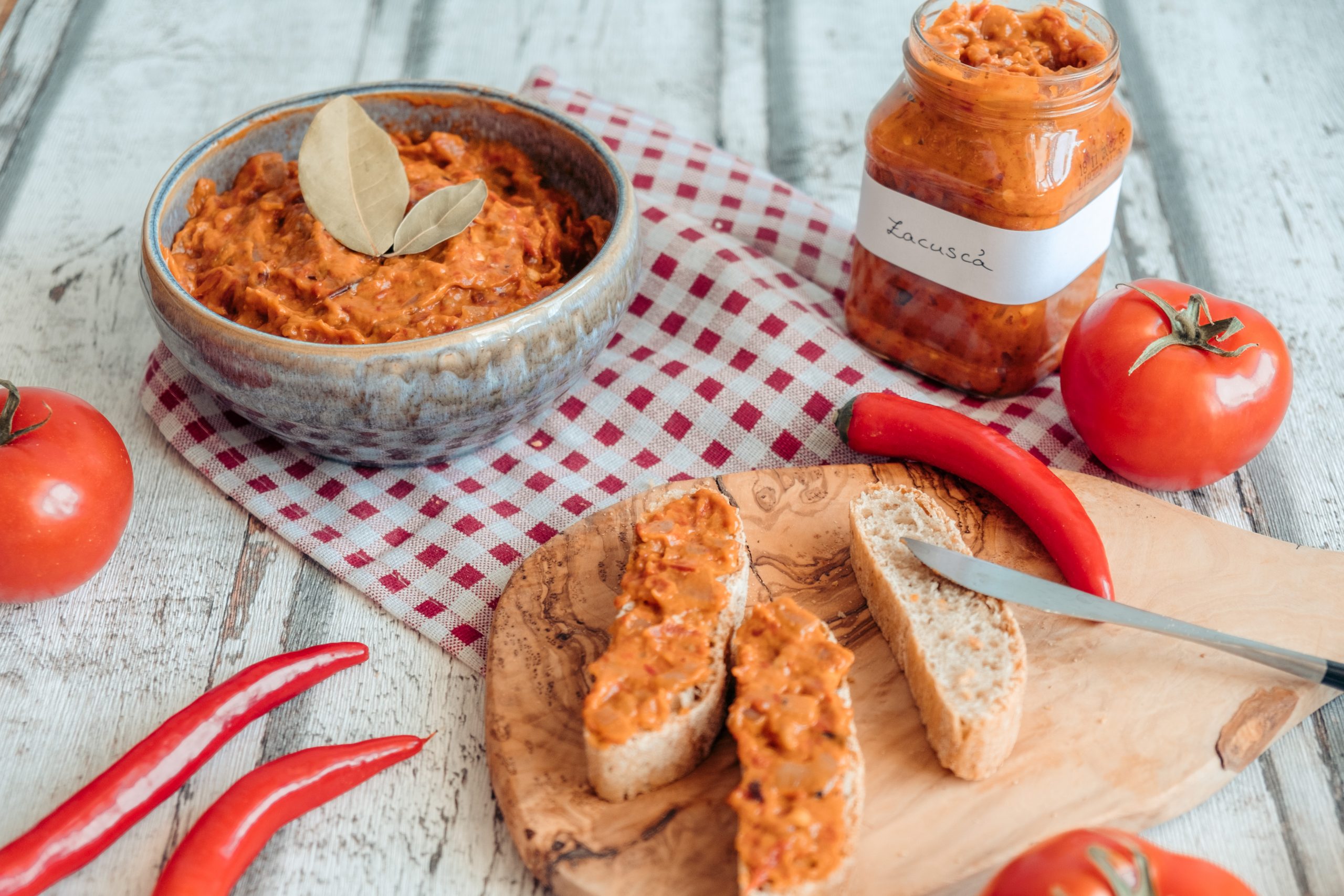
5. Drob (Romanian Easter Meatloaf)
Drob is a traditional Romanian dish typically served during the Easter season. This popular holiday dish is made by combining minced lamb offal (kidney, heart, lungs, liver, and spleen) with garlic, dill, and milk-soaked bread. To give it a dash of colour and flavour, a hard-boiled egg is added to the meatloaf. It’s very similar to the idea of a Scottish lamb haggis.
The use of herbs gives this dish a very pleasant flavour, making it unique to Romania. It’s not your typical Romanian dish found on restaurant menus and it’s mainly a homemade dish. Again, every family has its own recipes and some even make variations with chicken or turkey. Drob is always served sliced and cold as an appetiser.
6. Balmos (Traditional Shepherd Dish)
Balmoș is a traditional Romanian shepherd dish based on polenta with lots of added dairy. It will literally blow your mind (or is it taste buds?) once you taste it. This traditional food from Romania is fatty, buttery, silky, and soft like a cream yet heavy and very rich in taste, and yes, loaded with cheese.
How is it prepared? First, sour cream is boiled with butter plus some little salt for several minutes. Corn flour is then added until it is smoothly boiled without lumps. Finally, lots of salty fermented cheese is added to create the ideal balmos dish.
What about eating it? It’s best served extra hot, preferably with some butter and sweet cheese topping. If you are looking for the perfect meal for a chilly evening, Balmoș is perfect as it’s not only tasty but comforting too. In the mountains, it’s usually served right next to crispy sausages.
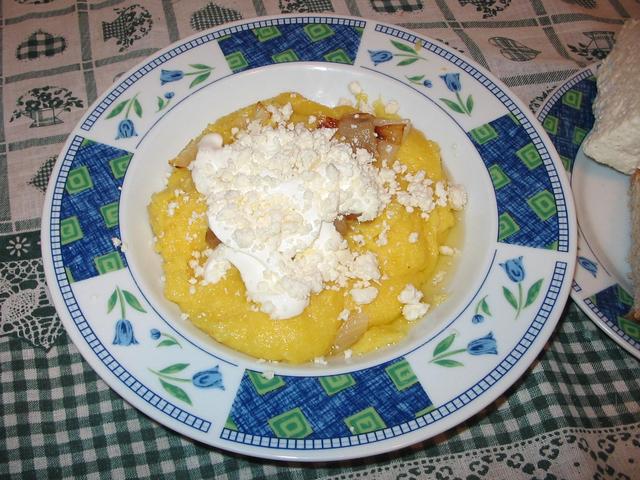
Kagor at the Ukrainian language Wikipedia, CC BY-SA 3.0, via Wikimedia Commons
7. Ciolan de Porc la Captor (Roasted Pork Knuckles)
For the meat lovers out there, Romania has yet another traditional dish to impress. Roasted pork knuckles, going by the name Ciolan de Porc la Captor, is a delicious dish if you love pork. It’s particularly popular in the Transylvania region, so if your travels take you there, don’t allow the opportunity to pass. We loved how the meat has been infused with cumin, and garlic, and then cooked slowly in the oven. You will enjoy the crisp, delicious dumplings.
How is it best served and eaten? Often, the roasted pork is served with polenta, which mingles nicely with the fat, salty pork. Mustard sauce served on the side together with pickled cabbage nicely cuts through the fatty pork meat to bring out the best taste and flavour.
When ordering this delicious Romanian food, bring your appetite along, forget about weight issues and simply indulge yourself! And the best part? The knuckles are served huge – plenty enough to share when you are two.
Book this day trip to Transylvania so you can go to an authentic restaurant and eat this Romanian food.
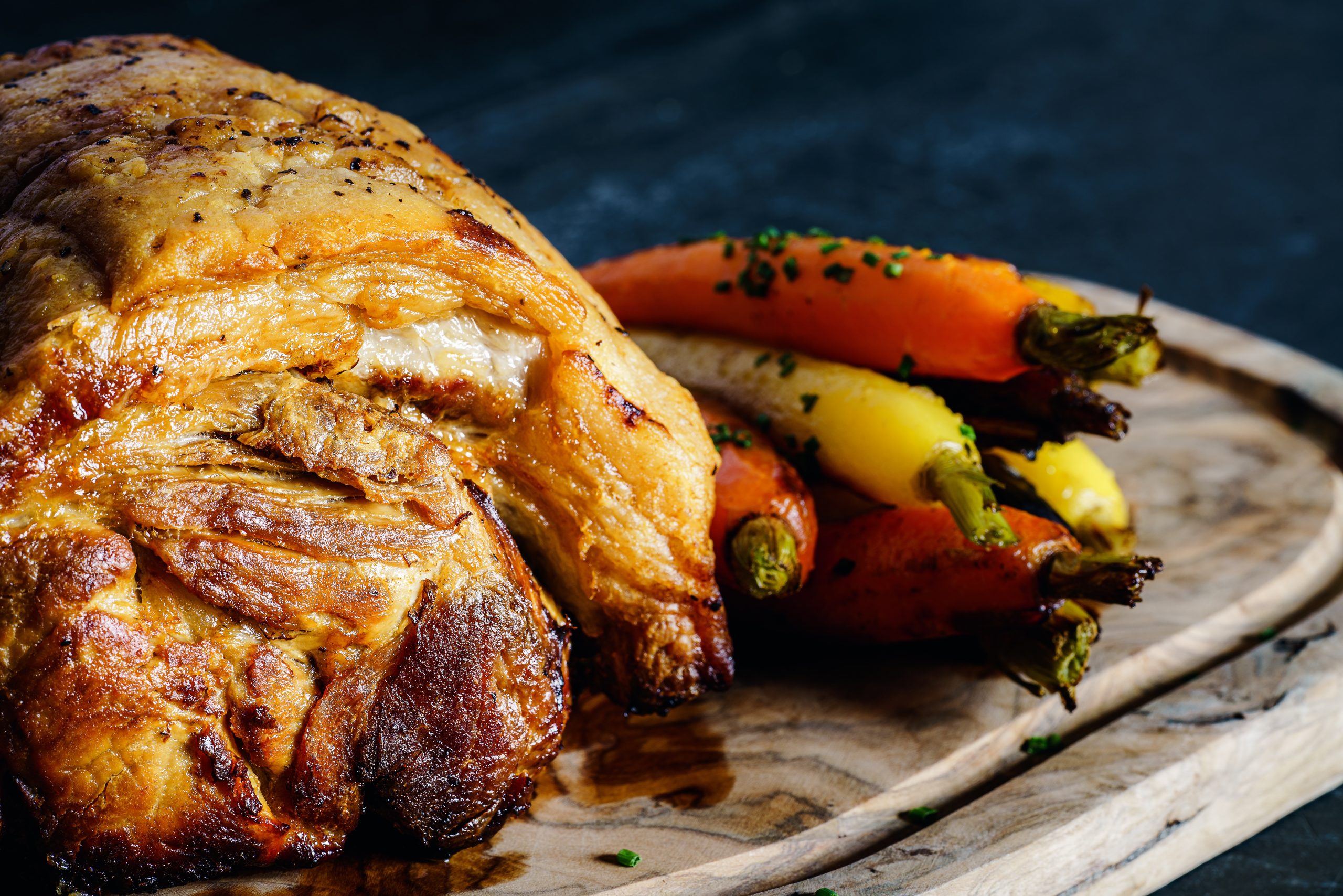
8. Pomana Porcului (Honoring the Pig)
This is a very old Romanian tradition, part of local customs and traditions, done just before Christmas in December. Pomana porcului is in honour of a pig that has been recently slaughtered. The Pomana porcului tradition normally takes place in the crisp, cold air of December, when pigs are slaughtered for Christmas dinner. The family gathers around for this event and when done in the rural areas of Romania, usually other villagers are invited as well.
Fresh meat cut from a pig recently slaughtered is fried in a deep pan in its own fat. This savoury traditional food from Romania goes down pretty well, especially when served along with authentic Romanian pickles. Often, restaurants across Romania have this meal on their menu so a must-try on your next visit.
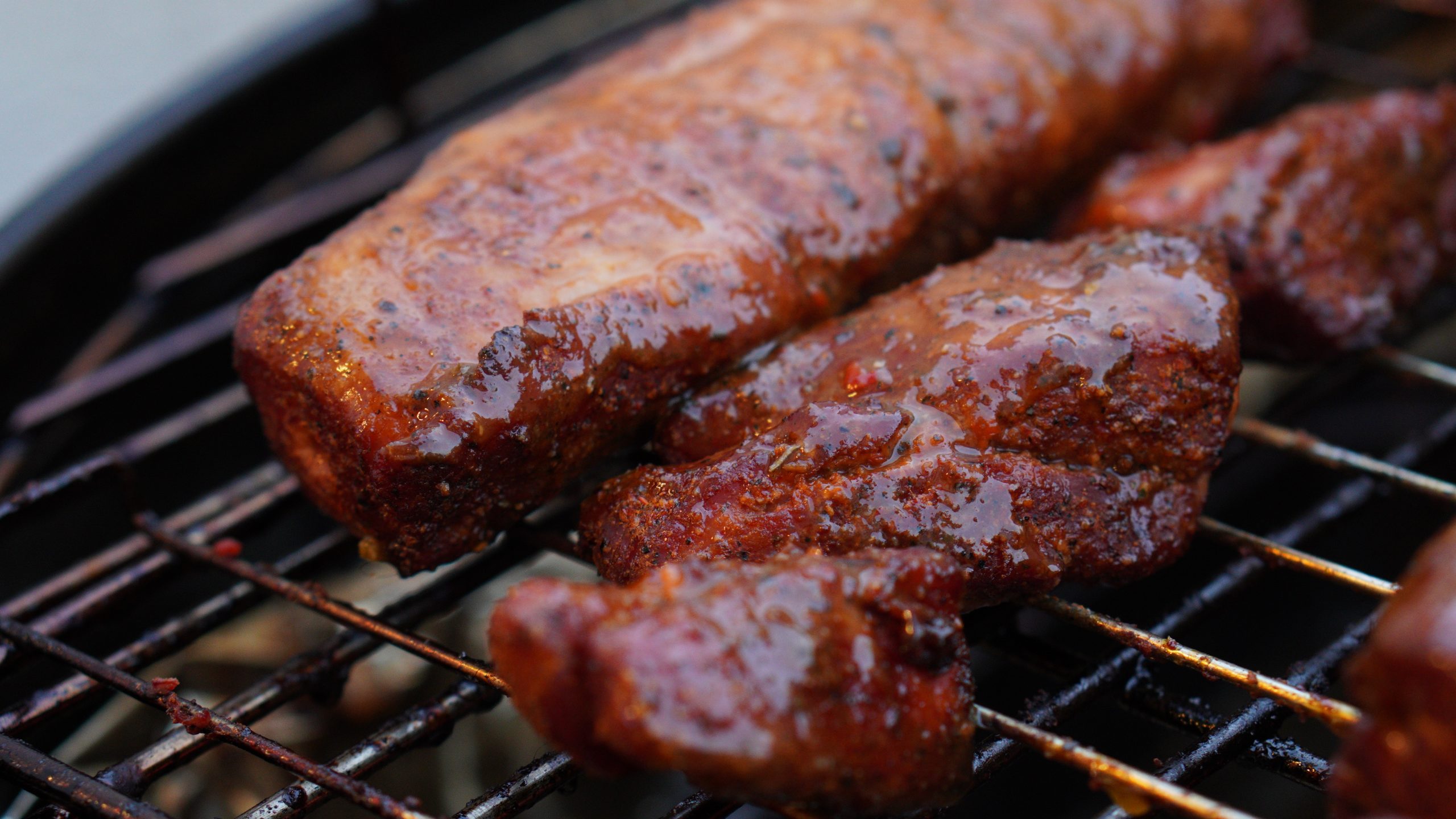
9. Tochitură Moldovenesca (Thick Pork Stew)
Oh what a glorious traditional dish this is. This is a thick pork stew that is simmered in wine or spicy tomato sauce to develop a wonderful and rich meaty flavour. It’s a dish that originates from the Eastern part of the country called the Moldovia region.
If you want to enjoy Romanian food all on a plate, then this is the dish to order. IT’s usually served with polenta, an egg, cheese, sausages and pickles on the side. It’s definitely comforting food that will leave you full and happy.
If you’re hungry, you should definitely order this Romanian food. So good!

Nicubunu, CC BY-SA 3.0, via Wikimedia Commons
10. Mititei/Mici (Rolled and Grilled Meat)
Both the words Mici & Mititei can be translated to mean “small ones”. Mici literally means a small rolled meat. This Romanian speciality is usually made from a unique mix of pork, lamb, and beef plus spices like thyme, coriander, garlic, and black pepper. You may find some people adding sodium bicarbonate. The mix is grilled and is best when eaten hot with mustard.
This traditional food from Romania has an entertaining story regarding its origin. It is alleged that in the 19th century, during a diner rush, a popular sausage restaurant ran short of sausage casings. Under lots of pressure, a chef is said to have grabbed the sausage stuffing, and without the casing formed it into a tube, grilled and then served the dinner guests. They apparently loved the skinless “little ones” and thus was born Mititei, a new Romanian favourite.
When ordering mici, you normally have to specify how many you want. You will get a plate of mici with fresh bread and mustard on the side.
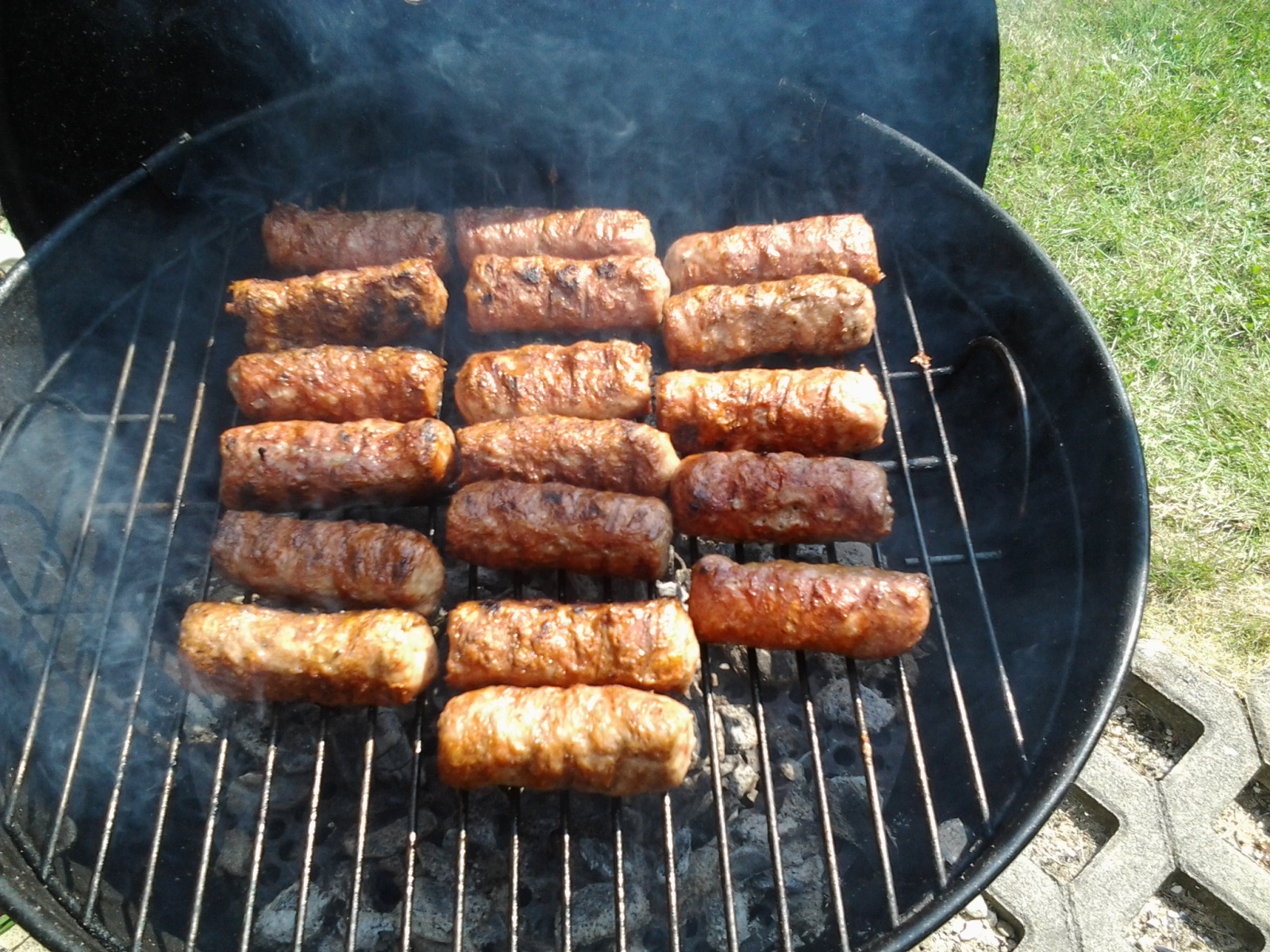
Stoschmidt, CC BY 3.0, via Wikimedia Commons
11. Tocanita de Vita cu Cartofi (Beef Stew with Potatoes)
Beef stew with potatoes is one meal you will encounter in nearly every corner of Romania and a staple in any home. This slow-cooked casserole of tender beef is typically made with potatoes, baby carrots, onions, and tomato sauce in red wine.
It’s the Romanian version of Beef bourguignon. The meat may be chopped/sliced into small pieces or left as a chunk and can be served along with pickled cucumbers. There will almost always be a side of silky polenta on the side and you can add toppings like a fried egg and soft cheese on the side.
Romanian food is all about experiencing a variety of tastes together, so ask for topping recommendations. Your plate will be full and so tempting.

12. Shoarma (Romania’s Version of Shawarma)
Perhaps you have tried Shawarma or Döner Kebab in your own country? Sharwama then is Romania’s version of this delicious meal or snack. In Romania, slices of marinated meat or pork are layered together on a single steel rod. To cook or grill the meat, the rod is installed vertically in front of a grill, and the meat is then grilled rotisserie style.
The meat is shaved off and then served with a sauce (garlic and yoghurt) when tucked into a bun or pita. We can assure you, nothing can beat this juicy meat preparation. Shoarma will leave you wanting more!
When you visit Bucharest, you are going to see this Romanian dish everywhere. It’s a budget-friendly dish that must be sampled at least once. It’s really filling and ideal for a quick lunch on the go.

13. Salata ‘de boeuf’ (Winter Beef Salad)
Salata ‘de boeuf’ is considered one of the most traditional foods from Romania, particularly for the holidays. Usually served as a starter, you can also take this beef salad as a meal on its own. If you are staying with a family during your Easter or Christmas visit, you are likely to see this on the dinner table.
Salată de boeuf is a combination of finely chopped cooked beef with root vegetables all folded in homemade mayonnaise. It’s topped with beautiful decorations of pickles and vegetable garnishes to make it look amazing. Some Romanians love to add boiled egg sliced to this dish as well.
14. Ciorbă de Fasole (Romanian Bean Soup)
Ciorbă de fasole is a traditional Romanian sour soup that’s made with dry beans and an assortment of vegetables. The vegetables you will find in this soup include celery root, parsley root, onions, and red peppers.
If you love tasty soups, Ciorbă de fasole is typically seasoned with lovage, pepper, Borș, thyme, and salt. Borș consists of water in which wheat or barley bran, sometimes sugar beet or a slice of bread have fermented. It becomes sour similar to the German sauerkraut juice.
This Romanian food may be served hot or cold and is best enjoyed with crusty bread on the side. It’s usually served as a starter before a main dish.
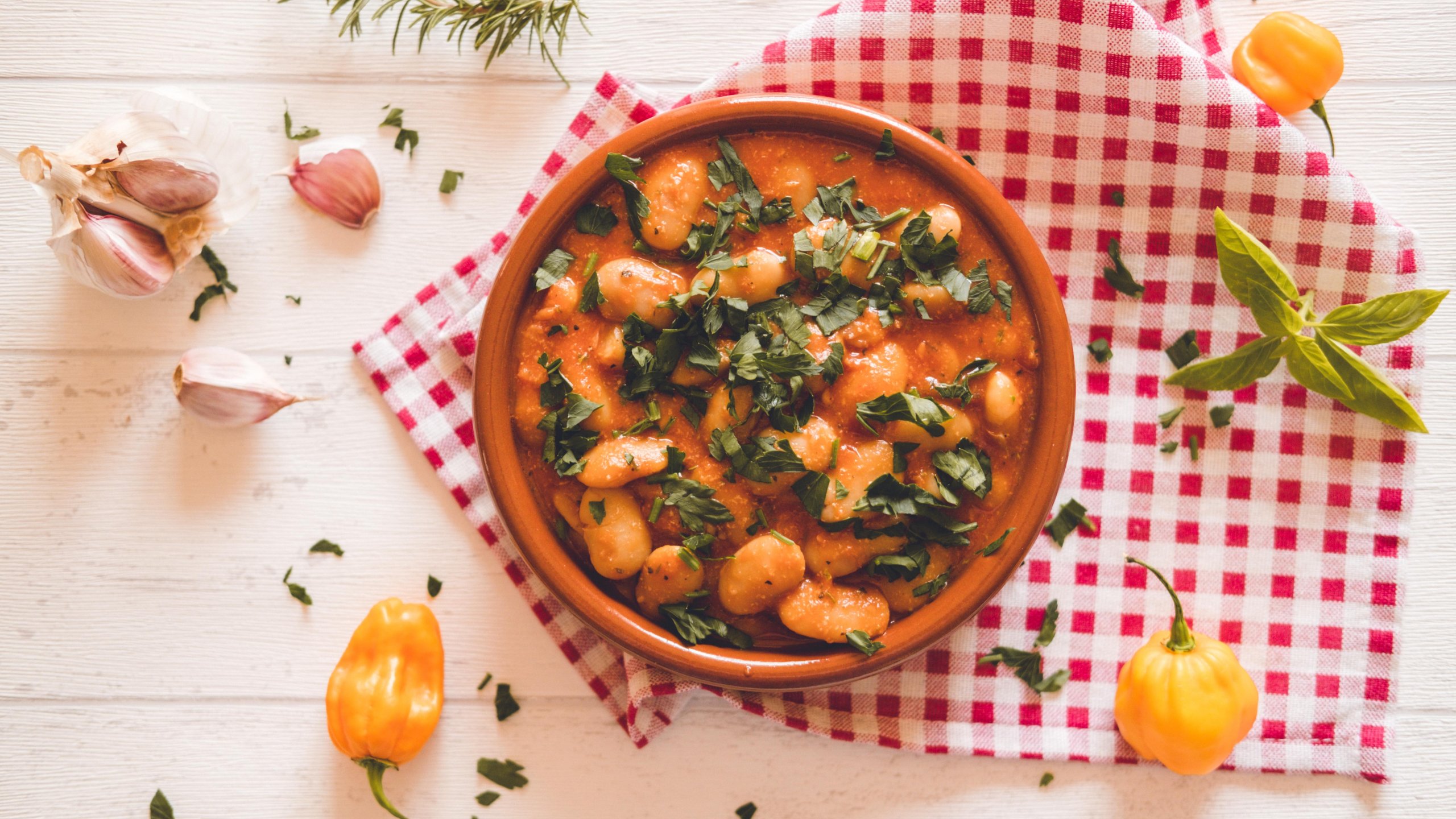
15. Cozonac (Traditional Romanian Babka)
Cozonac is a traditional bread from Romania, a type of sweet bread usually eaten during festive seasons such as Easter and Christmas. It’s similar to a babka, as the interior has swirls of chocolate with nuts, dried fruit and Turkish delight.
The interior of this bread is very fluffy and light. Sliced, it will unravel the most beautiful swirly patterns with walnuts and chocolate. The top of the cake is shiny and silky, usually brushed with egg and honey.
Although this traditional Romanian bread smells heavenly when fresh out of the oven, the Romanians traditionally only serve it when fully cooled. You can enjoy Cozonac accompanied by a cup of milk, coffee, or tea. It’s a delight you must eat!
Try the cozonac recipe at home.
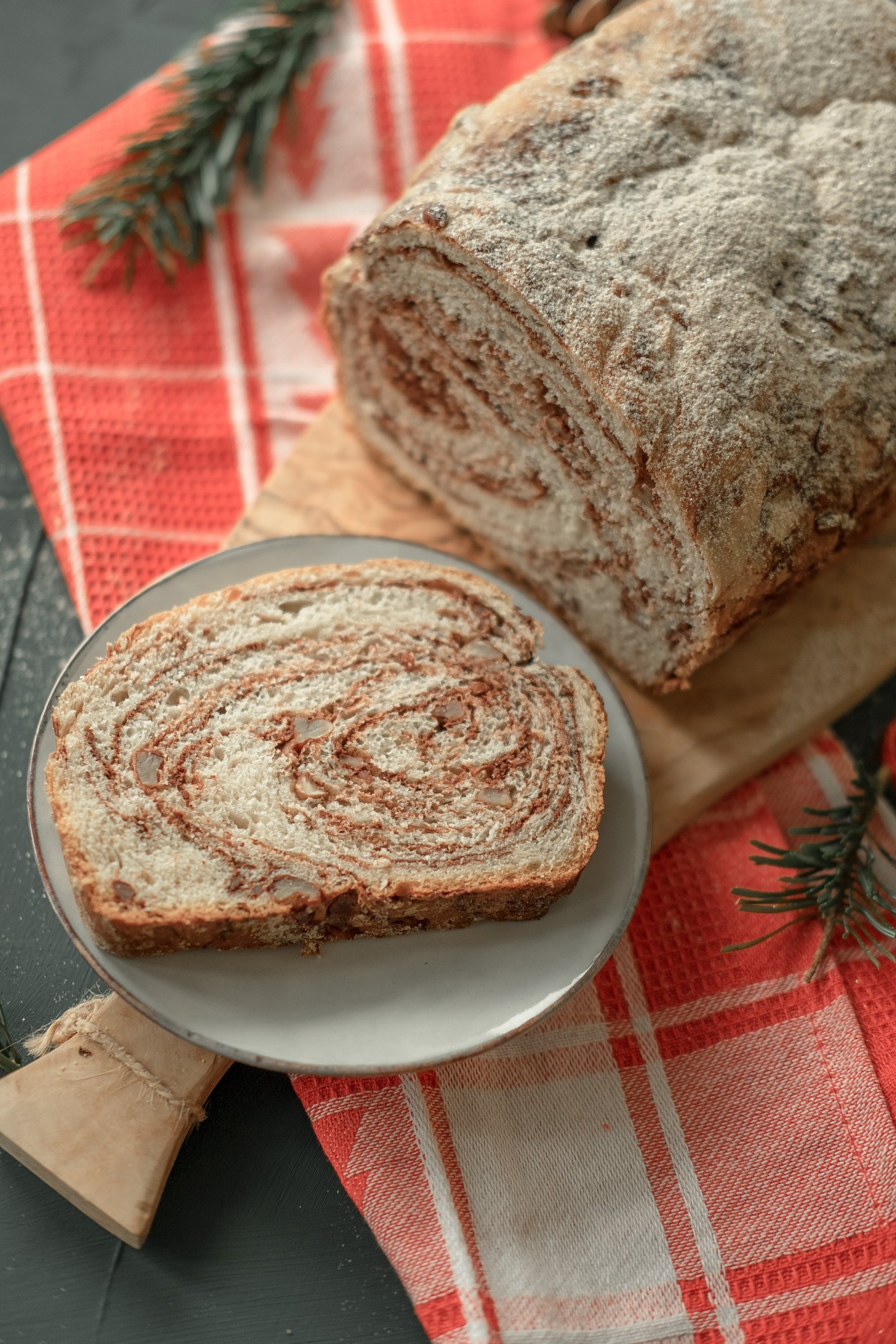
16. Papanași (Fried Doughnuts with Jam)
This is by far my favourite Romanian food, a mouth-watering dessert that tastes perfect. Papanași originated from the Northern regions of Romania. This dessert consists of fried fried doughnuts that are filled with sweet cream cottage cheese. The cream doughnut is then topped with sweet and sour cream plus blueberry jam. This mother of all Romanian desserts, the ambrosial Papanași is a must-try, forget about the calories!
It’s always served hot, as a dessert and it’s one of the most beloved Romanian treats locals adore. You will find this treat in all traditional Romanian restaurants.
Don’t forget to get locals to show you around the find you the best food in Romania. Book your food walking tour in Bucharest! And don’t forget to leave a comment below to let us know what you think of our traditional Romanian dishes! Yum!



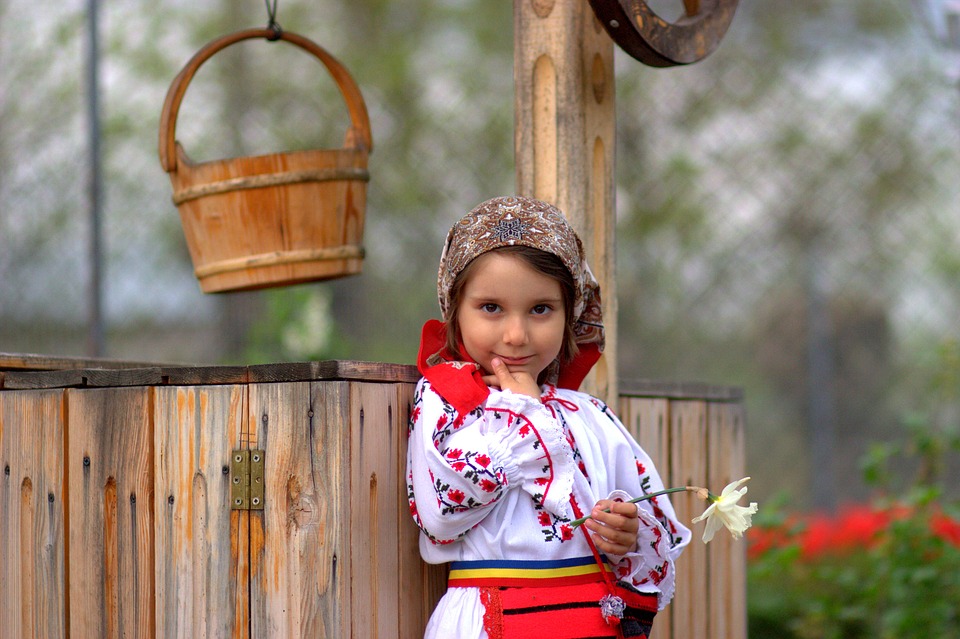

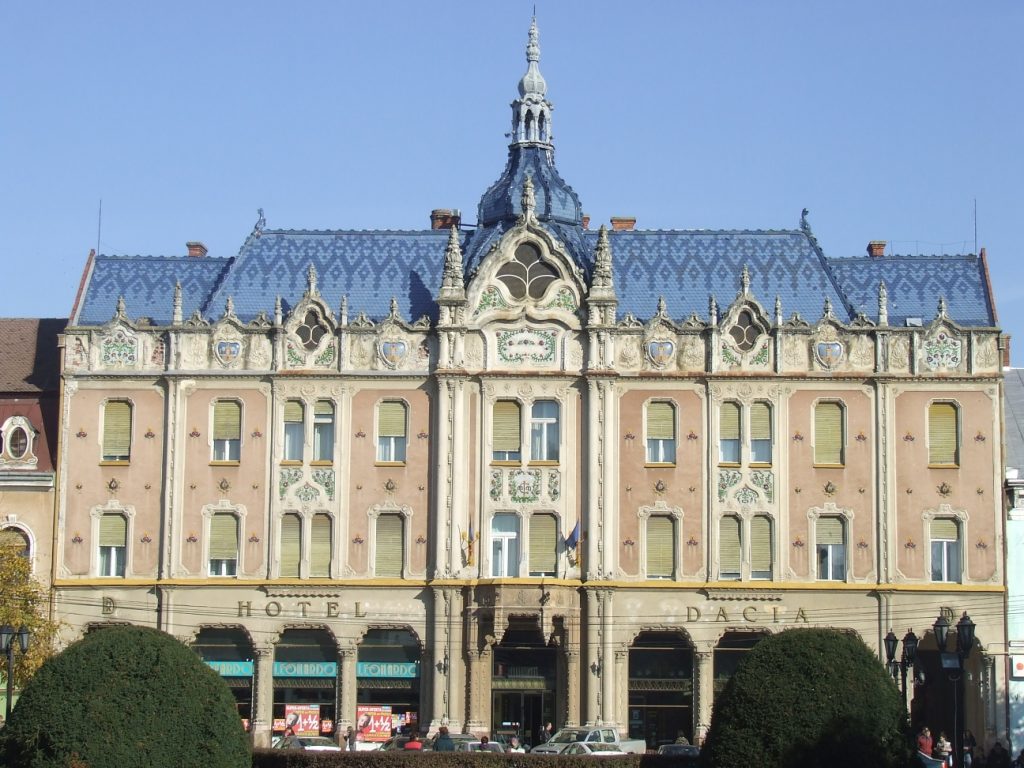



Leave a Reply